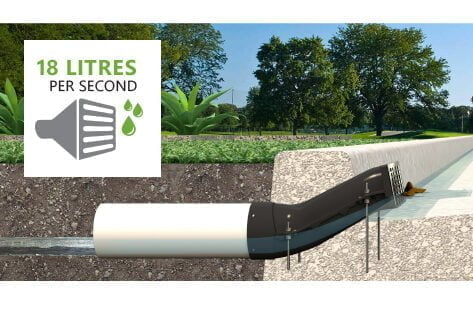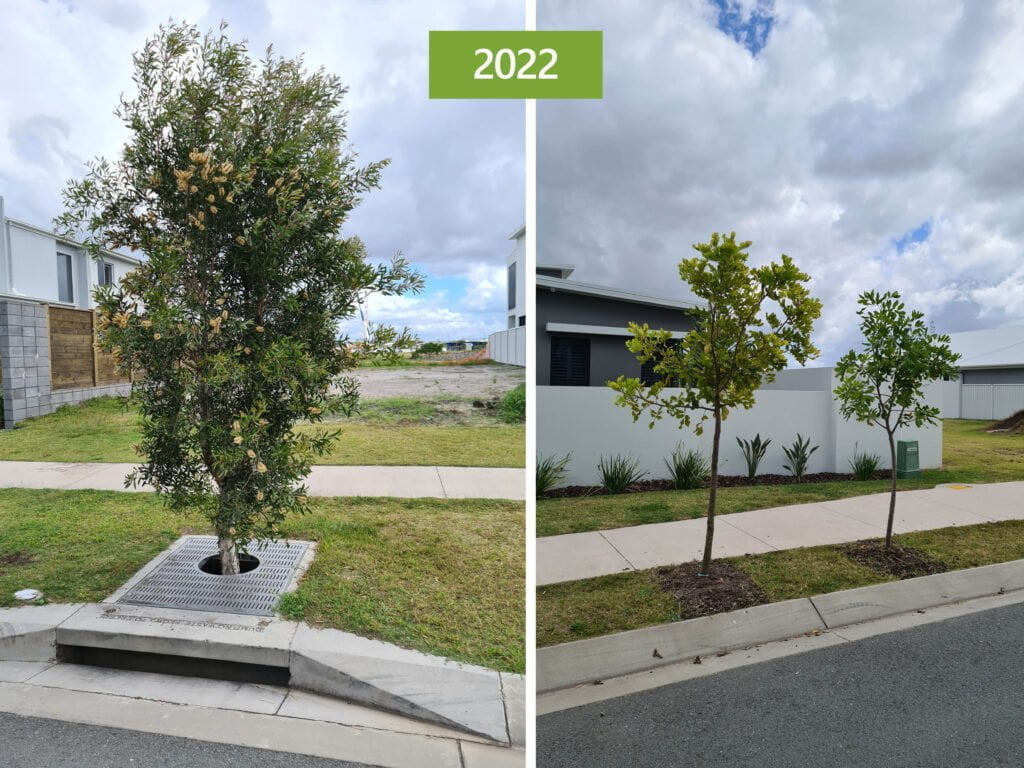Posted by Sophie Nichols on Fri, Jul 22, 2022 @ 2:39 AM
The Role of Trees in Stormwater Management

In built-up urban areas, trees can help restore pre-development water flows and remove pollutants and filter water. Trees act as natural filtration machines, which can hold, release, and clean water through soil and evaporation.
A question often asked regarding urban trees and water capture is, can stormwater runoff from roads be too polluted for the trees to use?
Yes, stormwater can be very polluted, as large amounts of debris, particulates, and rubbish can suffocate a tree and prevent water and nutrients from reaching the tree’s root system for absorption.
Gross pollutants, such as plastic rubbish or vehicle parts, can largely be filtered out often by screens, like stormwater grates.
Smaller than gross pollutants are total suspended solids (TSS). TSS refers to solids suspended in water or wastewater that can be trapped by a filter. TSS can include various materials, such as silt, decaying plant and animal matter, industrial wastes, and sewage. High suspended solids concentrations can cause many problems for stream health and aquatic life.
Then there are soluble or water-borne pollutants, which are difficult to filter out economically. These pollutants can cause severe damage to ecosystems.
Storm water systems can be installed, which prevent these pollutants from accumulating in our water streams. Citygreen offers a revolutionary range of stormwater management solutions that prevent water pollution and make it easier –and more affordable–to manage and re-use stormwater.
Why use Trees for Stormwater Management?
Trees offer a large value add when compared to traditional stormwater management systems. Trees for stormwater management offers numerous advantages in urban areas. Firstly, trees act as natural water managers by absorbing excess rainwater, mitigating the risk of flooding and erosion. Their extensive root systems serve as filters, trapping and breaking down pollutants present in stormwater, which ultimately improves the quality of water entering local water bodies. Additionally, trees reduce the volume of stormwater runoff, easing the burden on municipal drainage systems. Moreover, these green giants contribute to urban cooling by providing shade and releasing moisture through transpiration, enhancing the overall urban microclimate and conserving water by reducing evaporation from impermeable surfaces.
Case Study: Urban Trees for Shade & Stormwater Management at Kinsmen Sports Centre in Edmonton
Furthermore, the aesthetic and social benefits of urban trees are noteworthy. Well-maintained green spaces with trees enhance the quality of life for urban residents and promote community well-being. Trees also create habitats for wildlife, contributing to urban biodiversity and ecological balance.
Engaging communities in tree planting and maintenance fosters a sense of ownership and responsibility. From an economic perspective, effective stormwater management with trees can lead to cost savings by reducing the need for extensive stormwater infrastructure. Lastly, utilizing trees that align with regulatory compliance, as many cities and regions have specific stormwater management requirements where integrating trees into stormwater management strategies not only addresses practical concerns but also contributes to the creation of attractive, sustainable, and resilient urban environments.
How Do Trees Clean Stormwater?
Trees play a vital role in filtering water through a series of natural mechanisms. Their root systems, for instance, engage in a process called root uptake, where they absorb water from the soil, including groundwater and rainwater. This not only helps in managing excess water in urban areas, reducing the risk of flooding and waterlogging, but also contributes to water purification. As water moves through the soil surrounding tree roots, it undergoes natural filtration. The soil acts as a powerful filter, capturing impurities, sediments, and pollutants present in the water, thereby improving water quality. Microorganisms in the soil and on tree roots further aid in this process by breaking down organic matter and pollutants into less harmful substances.
Additionally, trees are proficient at nutrient uptake, extracting essential nutrients from water for their growth. In doing so, trees indirectly remove excess nutrients like nitrogen and phosphorus, common water pollutants. Some tree species excel at phytoremediation, absorbing and storing pollutants such as heavy metals and chemicals, thus contributing to water purification and helping prevent water pollution.
Trees release water vapor through transpiration into the atmosphere, mitigating local flooding risks by reducing runoff volume. Trees also help retain sediments and prevent erosion, which can lead to waterbody sedimentation and, consequently, improved water clarity. Altogether, trees collectively enhance water quality by naturally reducing contaminant levels, pollutants, and sediments, making a significant positive impact on the health of water systems.
Case Study: Pelican Waters

Pelican Waters, a residential estate located on the Sunshine Coast of Queensland, Australia, has been trialling Citygreen’s Strataflow™ system with so far great success.
This new development aimed to use the advanced water-sensitive urban design (WSUD) and improve sales of lots near bioretention basin. Research has shown that preserving natural features in residential developments can increase the value and sale price of lots.
Instead of a traditional bioretention basin, Citygreen’s Strataflow™ uses an underground structural soil cell system, which delivers a high standard of stormwater treatment with a completely natural look.
To any passer-by, what you see is a healthy, flourishing tree, surrounded by a grassy verge, but beneath the ground is an advanced WSUD.

The Strataflow™ is a specialised design ‘hybrid’ tree pit, combining the best urban forestry for sustained and healthy tree growth with fully functional stormwater management – including filtration and flow management.
These designs may start with the Strataflow Kerb Inlet. This device sits in the road kerb alignment, retaining the inherent structure of the concrete kerb. The inlet has a grate (acting as a screen), to stop larger-sized pollutants from entering the system, which inhibits healthy tree growth.

The inlet lets water from the road carriageway flow through the front grate of the drain at a capacity of up to 18 litres/ 5 gallons per second. This allows the inlet to minimise pollutants entering waterways and reduce flood risks by controlling the stormwater flow entering our city’s underground drains.
When the water flows through the street, it enters through the inlet and flows underground. From there, the stormwater reaches the stratavault system, where the stormwater is stored, filtered and distributed effectively for the benefit of urban trees and for proper stormwater management.
The inlet ensures the water drains down at the correct optimal depth beneath the pavement height. From there, the stormwater reaches the structural soil cell system and the trees’ root system, where the stormwater is stored, filtered and distributed effectively for the benefit of urban trees and for proper stormwater management.
Essentially, Strataflow™ utilises readily available stormwater rather than potable water to irrigate street trees, which improves the vitality of trees and reduces the impact of stormwater on the local environment, all while maintaining a high natural presentation.

Call us today
Looking for a cost-effective and sustainable stormwater solution? Contact our friendly Citygreen Team now by clicking here.

